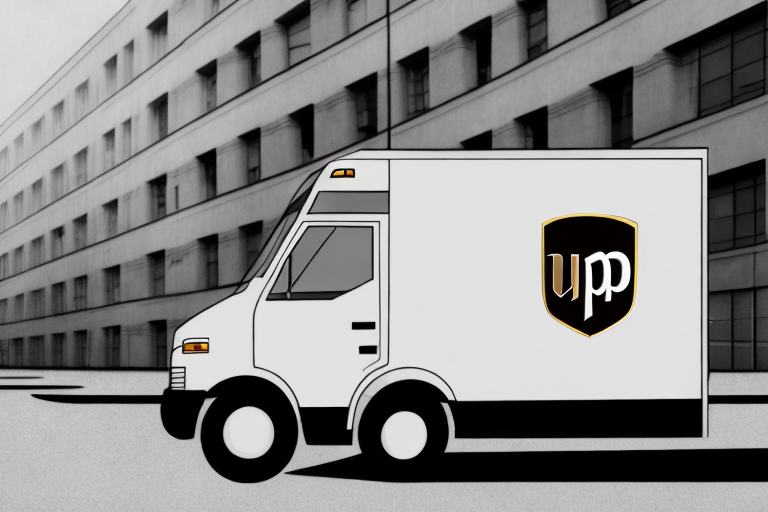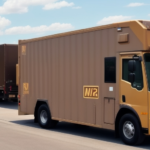How to Calculate UPS Shipping Rates for Pick Up
If you're planning to use UPS for shipping your packages, understanding how they calculate their shipping rates is crucial. This knowledge is especially important when utilizing their pick-up service, allowing you to estimate the shipment cost in advance and avoid unexpected expenses. This article delves into the intricacies of calculating UPS shipping rates for pick-up and offers strategies to reduce your shipping costs effectively.
Understanding the Factors that Affect UPS Shipping Rates
Before calculating UPS shipping rates, it's essential to grasp the factors influencing them. The primary determinants UPS uses include:
- Package Weight: Heavier packages incur higher shipping costs.
- Distance: The cost increases with the distance between the shipment's origin and destination.
- Shipping Speed: Faster delivery options, such as overnight shipping, typically cost more.
Additionally, any special handling requirements or additional services, such as insurance or signature confirmation, can impact the overall shipping rate.
An often overlooked factor is the type of item being shipped. Items deemed hazardous or oversized may require extra fees or specialized handling. For example, shipping hazardous materials like batteries or flammable liquids necessitates compliance with specific UPS regulations, which can affect the cost. Always verify with UPS whether your item falls into these categories to anticipate any additional charges.
Seasonal variations also play a role in UPS shipping rates. During peak periods, such as the holiday season, the demand for shipping services surges, potentially leading to higher rates. According to a 2023 UPS Industry Report, shipping costs can increase by up to 15% during the holiday peak compared to off-peak times. Planning your shipments ahead and accounting for these fluctuations can help manage costs effectively.
How to Determine the Correct Shipping Zone for Your Package
Accurately determining the shipping zone is vital for calculating UPS rates. UPS divides regions into different zones, with costs escalating as the distance between the origin and destination increases. To find the correct shipping zone for your package:
- Visit the UPS Zone Locator tool on the UPS website.
- Enter the origin and destination ZIP codes.
- Identify the corresponding shipping zone based on the tool's output.
It's important to note that the shipping zone differs from the ZIP code itself. While ZIP codes provide a general location, they do not directly correspond to UPS shipping zones. Utilizing the UPS Zone Locator ensures accurate zone determination, preventing potential discrepancies in shipping costs.
Tips for Accurately Measuring and Weighing Your Package
Accurate measurements and weight are critical in ensuring you are charged correctly for your shipment. Here are some tips:
- Use an Accurate Scale: Invest in a reliable scale to measure your package's weight precisely.
- Measure Dimensions Carefully: Measure the length, width, and height of your package, rounding up to the nearest inch. This is essential for calculating dimensional weight, which can affect shipping costs.
- Choose Lightweight Packaging: Opt for lightweight packaging materials to minimize the overall weight without compromising the package's integrity.
- Double-Check Your Measurements: Verify all measurements and weights before labeling your package to prevent errors that could lead to additional charges or delays.
Proper labeling is equally important. Clearly indicate the package's weight and dimensions to ensure UPS processes your shipment accurately and efficiently.
Exploring the Different UPS Delivery Options Available for Pick Up
UPS provides a variety of delivery options tailored to different shipping needs and budgets:
- UPS Ground: A cost-effective option for non-urgent shipments, typically delivering within 1-5 business days.
- UPS 3 Day Select: Ensures delivery within three business days, balancing cost and speed.
- UPS Next Day Air: Guarantees next-day delivery, ideal for urgent shipments but at a higher cost.
In addition to these delivery options, UPS offers several pick-up methods for your convenience:
- UPS Access Point: Have your package delivered to a nearby UPS Access Point location, allowing you to pick it up at your convenience.
- Home or Office Pick-Up: Schedule a pick-up directly from your residence or workplace.
- UPS Store Pick-Up: Hold your package for pick-up at a UPS Store location.
Choosing the appropriate delivery and pick-up options based on your specific needs can enhance efficiency and potentially reduce costs.
How to Create a UPS Account and Schedule a Pick Up Online
Setting up a UPS account is a straightforward process that enables you to manage your shipments seamlessly:
- Visit the UPS website and click on "Sign Up" to create an account.
- Fill in the required information, including your business details if applicable.
- Once your account is set up, log in to access the UPS dashboard.
- Select "Schedule a Pick-Up" and enter the necessary details, such as package information and preferred pick-up time.
Be aware that UPS may charge a fee for pick-up services, so include this in your shipping cost calculations. Additionally, you have the option to utilize UPS's packaging and label printing services for an extra fee, providing convenience if you lack the necessary materials.
Comparing UPS Shipping Rates with Other Carriers to Get the Best Deal
Comparing shipping rates across different carriers ensures you receive the best value for your shipments. While UPS is a reliable choice, other carriers may offer competitive rates based on your shipping requirements:
- FedEx: Offers a range of shipping options, including same-day and international services. FedEx's rewards program allows you to earn points for discounts on future shipments.
- United States Postal Service (USPS): Provides various shipping options like Priority Mail and Flat Rate Boxes, which can be more economical for smaller packages. USPS's Informed Delivery feature lets you preview incoming mail and packages.
Utilizing comparison tools, such as those available on ShipScience, can help you evaluate and select the most cost-effective carrier for your specific needs.
Ways to Save Money on UPS Shipping Costs without Compromising Quality of Service
Reducing UPS shipping costs while maintaining service quality is achievable through several strategies:
- Use UPS Shipping Calculators: Compare rates across various delivery options to choose the most cost-effective method.
- Leverage Bulk Shipping Discounts: If you ship frequently or in large volumes, inquire about bulk shipping discounts to lower your costs.
- Optimize Packaging: Use the smallest possible packaging to reduce dimensional weight and overall shipping costs.
- Choose Ground Shipping When Possible: Opting for ground over air shipping can result in significant savings for non-urgent packages.
- Schedule Pick-Ups During Off-Peak Times: Shipping during times of lower demand can sometimes lead to reduced rates.
Implementing these methods can lead to substantial savings without sacrificing the reliability and speed of UPS services.
What to Do If You Encounter Issues with Your UPS Pick Up or Delivery
Encountering issues with UPS pick-up or delivery can be frustrating, but there are steps you can take to resolve them efficiently:
- Contact UPS Customer Service: Reach out via phone, email, or live chat. Ensure you have your tracking number handy to expedite the process.
- Provide Detailed Information: Clearly explain the issue, including any special instructions or delivery preferences that were not followed.
- Utilize the UPS Website: Use the UPS website to track your shipment, update delivery instructions, or file a claim if necessary.
For more complex issues, consider reaching out to UPS through their support center to get specialized assistance.
Understanding the Importance of Proper Packaging for Safe and Secure Delivery
Proper packaging is essential to ensure your packages arrive safely and securely. UPS provides specific guidelines to help you package your items correctly:
- Use Sturdy Boxes: Choose boxes that can withstand the weight and handling involved in shipping.
- Ensure Proper Cushioning: Use cushioning materials like bubble wrap or packing peanuts to protect the contents from damage.
- Seal Boxes Securely: Use strong packing tape to seal all edges and openings of the package.
- Label Clearly: Clearly print both the recipient's and sender's addresses, ensuring they are easy to read and correctly placed.
Considering the contents of your package is also important. Fragile items may require additional protection, such as double-boxing or using specialized packaging materials. Proper labeling, including handling instructions like "Fragile" or "This Side Up," can further safeguard your package during transit.
By adhering to these packaging guidelines and thoroughly understanding how UPS calculates shipping rates, you can ensure that your shipments are both cost-effective and secure. Additionally, regularly reviewing UPS's shipping policies can keep you informed about any updates or changes that may affect your shipping strategy. Happy and efficient shipping!




















